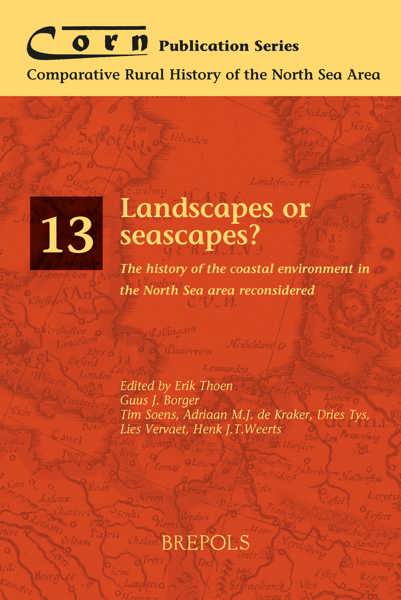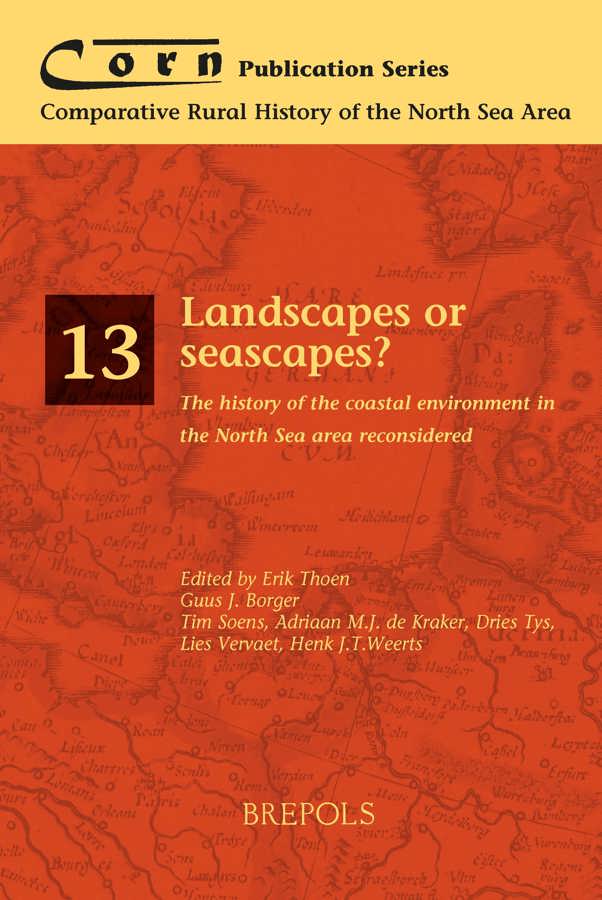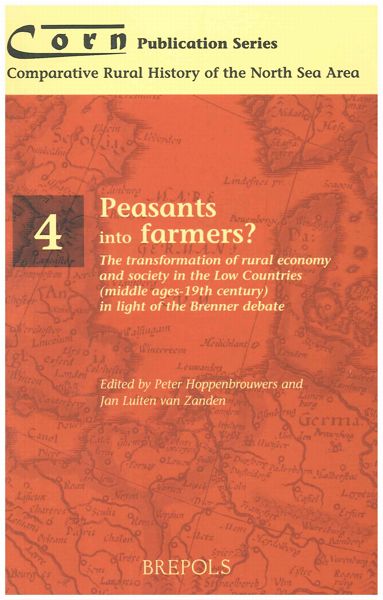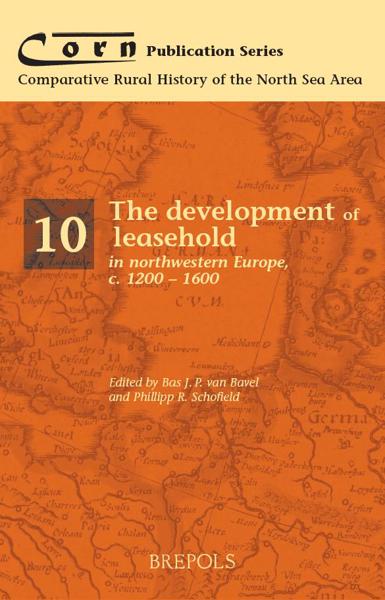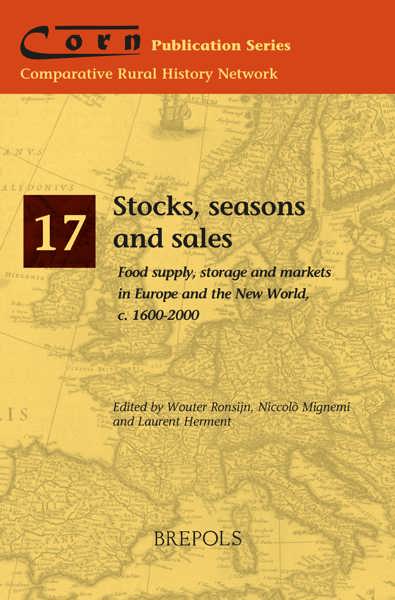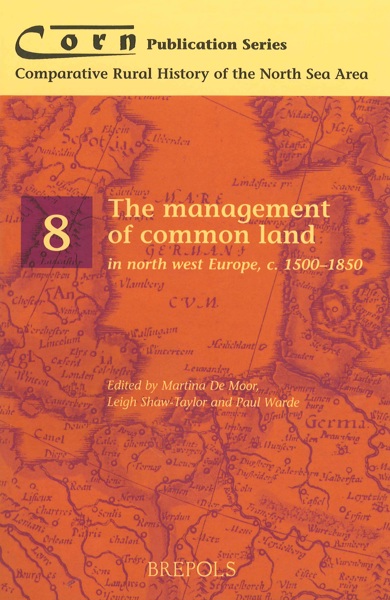
Landscapes or seascapes?
The history of the coastal environment in the North Sea area reconsidered
Erik Thoen, Guus J. Borger, Adriaan M.J. de Kraker, Tim Soens, Dries Tys, Lies Vervaet, Henk J.T. Weerts (eds)
- Pages: xii + 428 p.
- Size:156 x 234 mm
- Illustrations:130 col.
- Language(s):English
- Publication Year:2013
- € 90,00 EXCL. VAT RETAIL PRICE
- ISBN: 978-2-503-54058-0
- Paperback
- Available
- € 90,00 EXCL. VAT RETAIL PRICE
- ISBN: 978-2-503-54695-7
- E-book
- Available
"Für eine neue Ausrichtung der Marschenforschung, die nicht mehr ausschließlich der Rationalität von Ausweitung der Siedlungs- und Agrarflächen unterworfen ist, sondern die hochsensible Balance von Natur, Umwelt und Kultur in den Blick nimmt, ist dieser Band wegweisend." (Klaus-J. Lorenzen-Schmidt, in: Zeitschrift für Agrargeschichte und Agrarsoziologie, 62. Jg., Heft 1, 2014, p. 94-95)
"In a sense, this volume applies a human character to the remains that archaeologists and environmental scholar study, and so offers many insights. (...) we must celebrate the continued achievement of CORN to publish such research results." (Niall Brady, in: Medieval Archaeology, Vol. 58, 2014, p. 410-411)
"If there is any justice, this book will become a classic. It is characterised by high levels of scholarship, especially among Dutch and Flemish researchers. The great achievement of both contributors and editors is to communicate the results of excellent detailed work with the aim of informing and extending the larger questions, issues and debates. The volume will be a conceptual and methodological inspiration to scholars working in medieval wetlands in evaluating the complex interplay between natural influences, regional geographies and man-made intervention in the evolution of coastal landscapes across the North Sea area." (Susan Oosthuizen, in: Landscape History, 35.2, 2014, p. 92-93)
"(...) this particular volume (no. 13 in the series) is one of the strongest to appear in recent years." (Daniel Curtis, in: The Medieval Low Countries, Vol. 1, 2014, p. 287)
This volume deals with the geographical evolution of the coastal areas adjacent to the North Sea, with a focus upon the last two thousand years. Although many articles are reworked in a fundamental way, most of them are the result of a conference which took place in 2010 at the University of Ghent (Belgium) and which was actually the third in a series of symposiums on the same broad theme. The first took place in 1958, and the second in 1978. Recognized specialists were invited to present their research in a variety of fields relating to the subject. The various disciplines in which the coastal plains are studied too often remain within their own borders, and so we have set out to thoroughly interweave them in the hope that this will spur greater interdisciplinary cooperation. This collection of texts is intended to appeal not just to experts in historical geography, but to historians and scientists working in any field who wish to gain insights into the present ‘state of play’.
Detailed geological research about many areas provided new data and researchers gradually gained a better understanding of the close relationship between the processes of deposition, sea-level change, and land formation taking place across multiple regions. In the same time, historical and archaeological research also evolved. Most significantly, ideas regarding the chronology of human occupation have changed a lot. This scope of the research collected in this volume is important because it has increasingly become evident that land loss and gain were the results of regional factors, including and especially human activities. Moreover, it is now clear that humans devised survival strategies, and thus organized their activities in relation to the environment, on a regional basis, which means that the causes of local changes must have been both natural and socio-historical. It has now become clearer than ever that there is no single chronological scheme capable of explaining the coastal evolution across the entirety of the North Sea area.
Erik Thoen is professor in rural history and environmental history at the Ghent University (B) and co-ordinator of the CORN network
Guus J. Borger is emeritus professor in historical geography at the University of Amsterdam and the VU University Amsterdam (NL)
Tim Soens is professor in rural history and environmental history at the University of Antwerp (B)
Adriaan M.J. de Kraker is senior researcher in historical geography at the VU University Amsterdam (NL)
Dries Tys is professor at the Brussels Free University (VUB) (B)
Lies Vervaet is assistant specialised in rural history at the Ghent University (B)
Henk J.T. Weerts is senior researcher paleogeography at the Cultural Heritage Agency of the Netherlands
List of contributors - List of figures - List of tables
1. The North Sea coastal plains over the last two millennia: landscapes or seascapes? A new collection of essays
Erik THOEN, Guus J. BORGER, Adriaan M.J. DE KRAKER,Tim SOENS, Dries TYS and Henk J.T. WEERTS
PART I SEASCAPES VERSUS LANDSCAPES? THE NATURAL CONTEXT FOR HUMAN SURVIVAL
2. History of research and state of the art of the Holocene depositional history of the Belgian coastal plain
Cecile BAETEMAN
3. The Holocene coastal deposits of Sussex: a re-evaluation
Martyn WALLER and Anthony LONG
4. Potential and use of archaeological and historical data for a reconstruction of the sea level curve of the last 3000 years in the coastal zone of the southern North Sea. Results of a case study
Sjoerd J. KLUIVING, Michel A. LASCARIS, Adriaan M.J. DE KRAKER, Hans RENES, Guus J. BORGER and Steven A. SOETENS
5. From nature to culture: landscape and settlement history of the North-Sea coast of Schleswig-Holstein, Germany
Dirk MEIER
6. Natural and anthropogenic factors in the origin and evolution of the dune landscape on the islands of the south-west Netherlands
Anton M.M. VAN HAPEREN
7. Living in a dynamic landscape: the dune area on the island of Schouwen,province of Zeeland, during the late prehistory and early historical period
Bert VAN DER VALK and Frans BEEKMAN
8. Holocene sea-level change, sedimentation, coastal change and palaeogeography in the southern North Sea lowlands. A 2012 geological literature overview
Henk J.T. WEERTS
PART II LANDSCAPES VERSUS SEASCAPES? SOCIAL ORGANISATION AND CHANGING COASTAL LANDSCAPES
9. Dikes and other hydraulic engineering works from the Late Iron Age and Roman period on the coastal area between Dunkirk and the Danish Bight
Michel A. LASCARIS and Adriaan M.J. DE KRAKER
10. The medieval embankment of coastal Flanders in context
Dries TYS
11. Reclamations and submerged lands in the Ems River Estuary (900–1500)
Otto S. KNOTTNERUS
12. Monasteries and water management in the Frisian coastal plain. The reconstruction of landed property as a trigger for new research on the chronology of embankment and drainage
Johannes A. MOL
13. The origins of the Western Scheldt. Environmental transformation, storm surges and human agency in the Flemish coastal plain (1250–1600)
Tim SOENS
14. The evolution of the landscape and the social and political organisation of water management: the Po Valley in the Middle Ages (fifth to fourteenth centuries)
Michele CAMPOPIANO
15. Human impact on the coastal wetlands of Britain in the medieval period
Stephen RIPPON
16. Estuarine environments and resource exploitation in eastern Scotland c. 1125 to c. 1400. A comparative study of the Forth and Tay Estuaries
Richard ORAM
17. Storms, economics and environmental change in an English coastal wetland: the Thames Estuary c.1250–1550
James A. GALLOWAY
18. Clio defeating Neptune: a pyrrhic victory? Men and their influence on the evolution of coastal landscapes in the North Sea area
Erik THOEN
